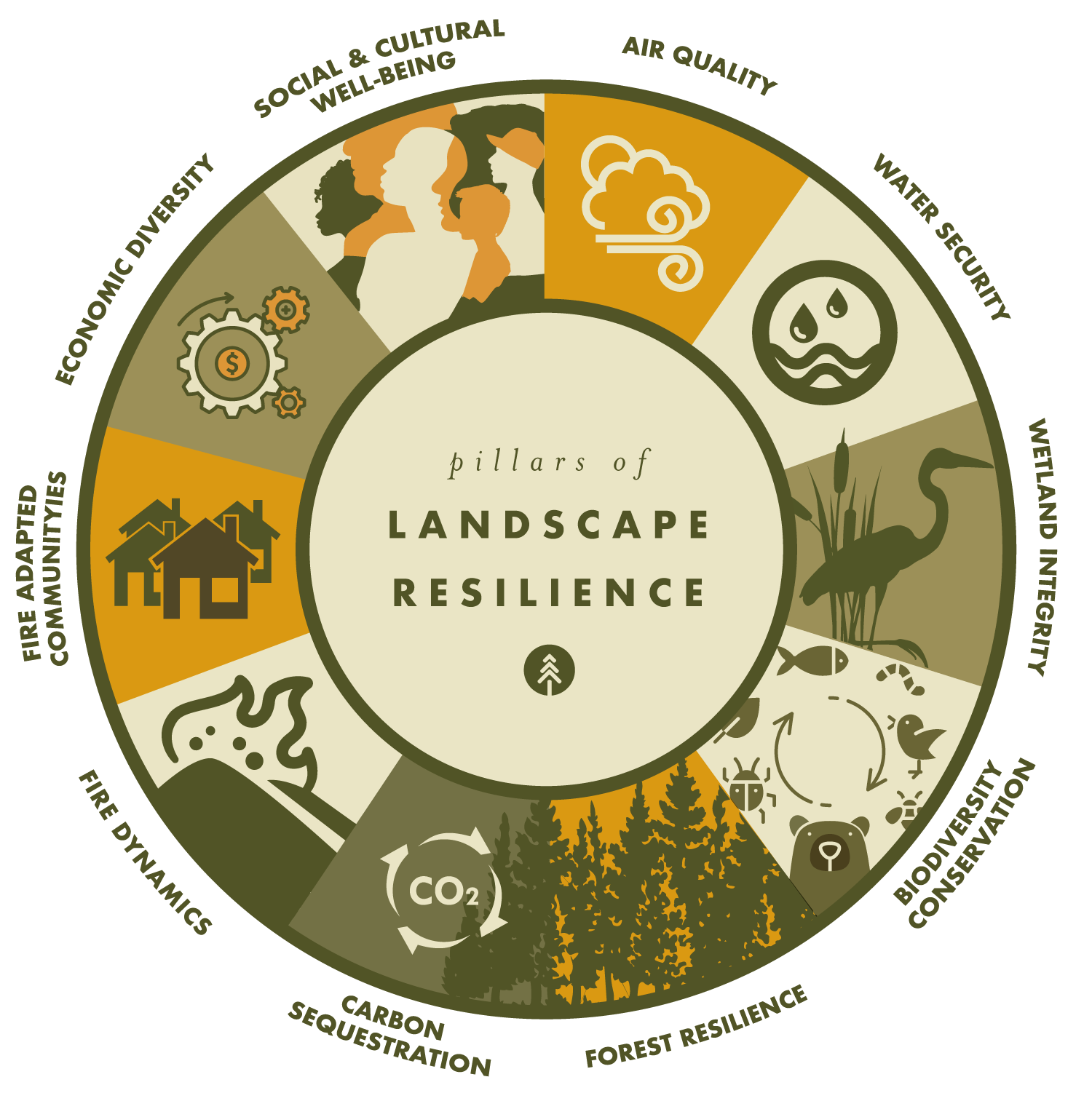
PUBLIC WORKSHOP & SURVEY
On February 9, the Task Force hosted a virtual workshop to help frame the need and use of Core Reporting Metrics as well as provide the public an opportunity to engage in their development. The Task Force will use Core Reporting Metrics to expand the Interagency Tracking System and Dashboard’s reporting capacity. By building on existing reporting on acres treated, Core Reporting Metrics will help us understand the benefits of treatments at the landscape to regional scale and track progress toward multiple objectives – including reducing fire risk to communities, restoring landscape resilience, and enhancing biodiversity, carbon storage, water security, air quality, and social and economic health.
It is recommended that anyone who reviews and provides input on the candidate Core Reporting Metrics first view the workshop recording to fully understand the background and goals of the project. The deadline to submit feedback is Friday, March 8.
What Are Core Reporting Metrics?
To understand Core Reporting Metrics, it is important to place them in context of the Pillars of Landscape Resilience that provide the foundation for the Regional Resource Kits.
Pillars describe desired landscape outcomes that encompass the suite of social and ecological benefits provided by resilient systems across fire-prone landscapes.

- Metrics – Each pillar is supported by a set of statewide or regional data, known as metrics. For example, the pillar of Forest Resilience includes metrics of tree density, tree species diversity, burn probability, and tree mortality, among others.
- Core Reporting Metrics – Through this workshop we will begin to identify a subset of metrics – Core Reporting Metrics – that are applicable for measuring success towards achieving multiple resilience goals.
Why do we need Core Reporting Metrics?
With climate change and a legacy of fire suppression, forests and shrublands across California face increased risks of large high-severity fire events and type conversion, threatening the state’s wildlands, infrastructure, public health, and safety. These natural lands provide a wealth of ecosystem services and benefits to California. To comprehensively understand and communicate the impacts of projects and funding, it is important to evaluate the outcomes of work completed using a honed set of metrics that capture the breadth of services these systems provide. This will facilitate a more nuanced discussion with the public and decision makers on the impacts work is having beyond number of acres treated and help inform adaptive management. Core Reporting Metrics will evolve over time as new data becomes available and our scientific understanding of our ecosystems and climate change grow.
What is the objective of the Workshop and Survey?
The Core Reporting Metrics Workshop helps frame the need and use of the Core Reporting Metrics and the Survey provides the public an opportunity to engage in their development and selection. The Task Force is seeking public input and feedback on key objectives Core Reporting Metrics should include and guidance on knowledge gaps. The feedback will be used to refine the candidate Core Reporting Metrics to ensure future selected metrics effectively report and communicate progress toward landscape resilience and are meaningful to stakeholders and their work.
With your help we will select Core Reporting Metrics that:
- Provide broad regional coverage
- Cover multiple resilience goals
- Are feasible to remeasure
- Prioritize reporting
- Are responsive to management actions
- Are consistent with new and emerging state mandates
- Are updatable to adapt to CA’s changing climate and goals.
